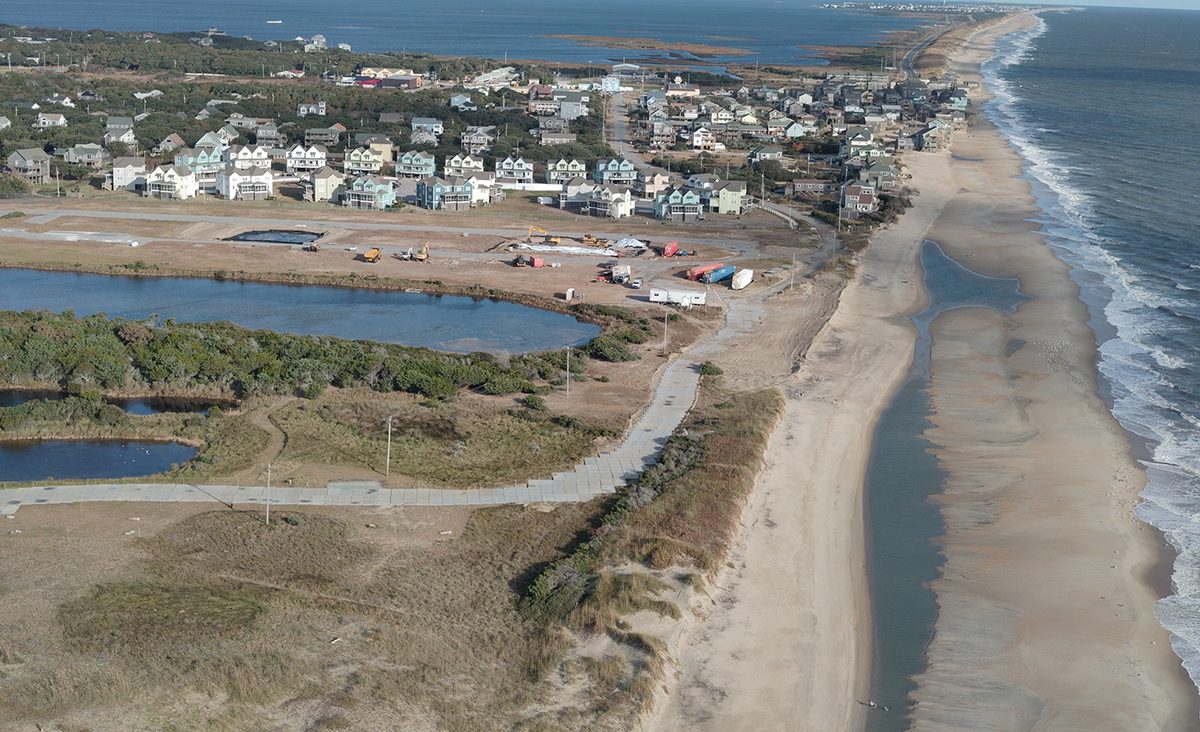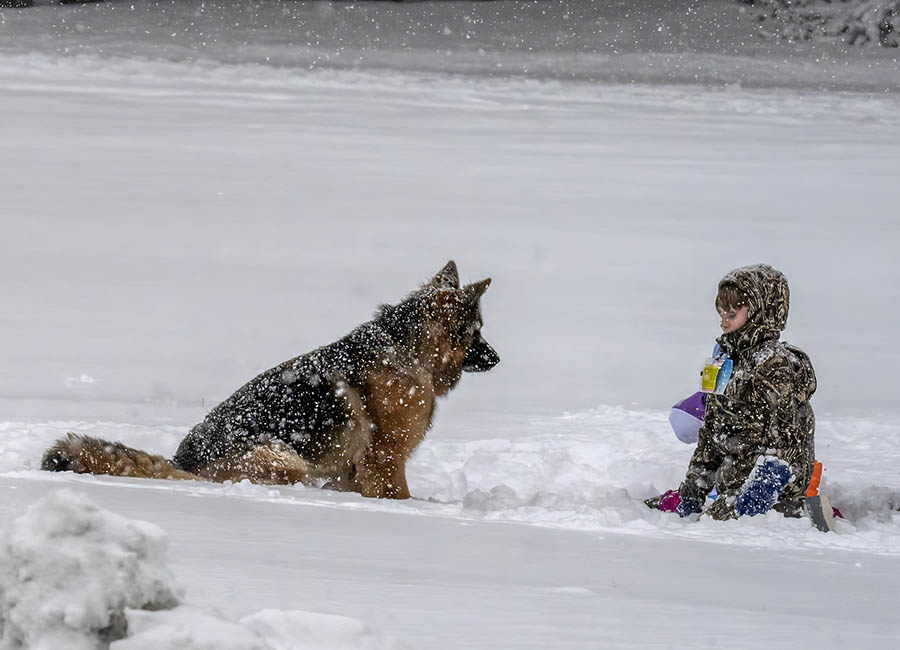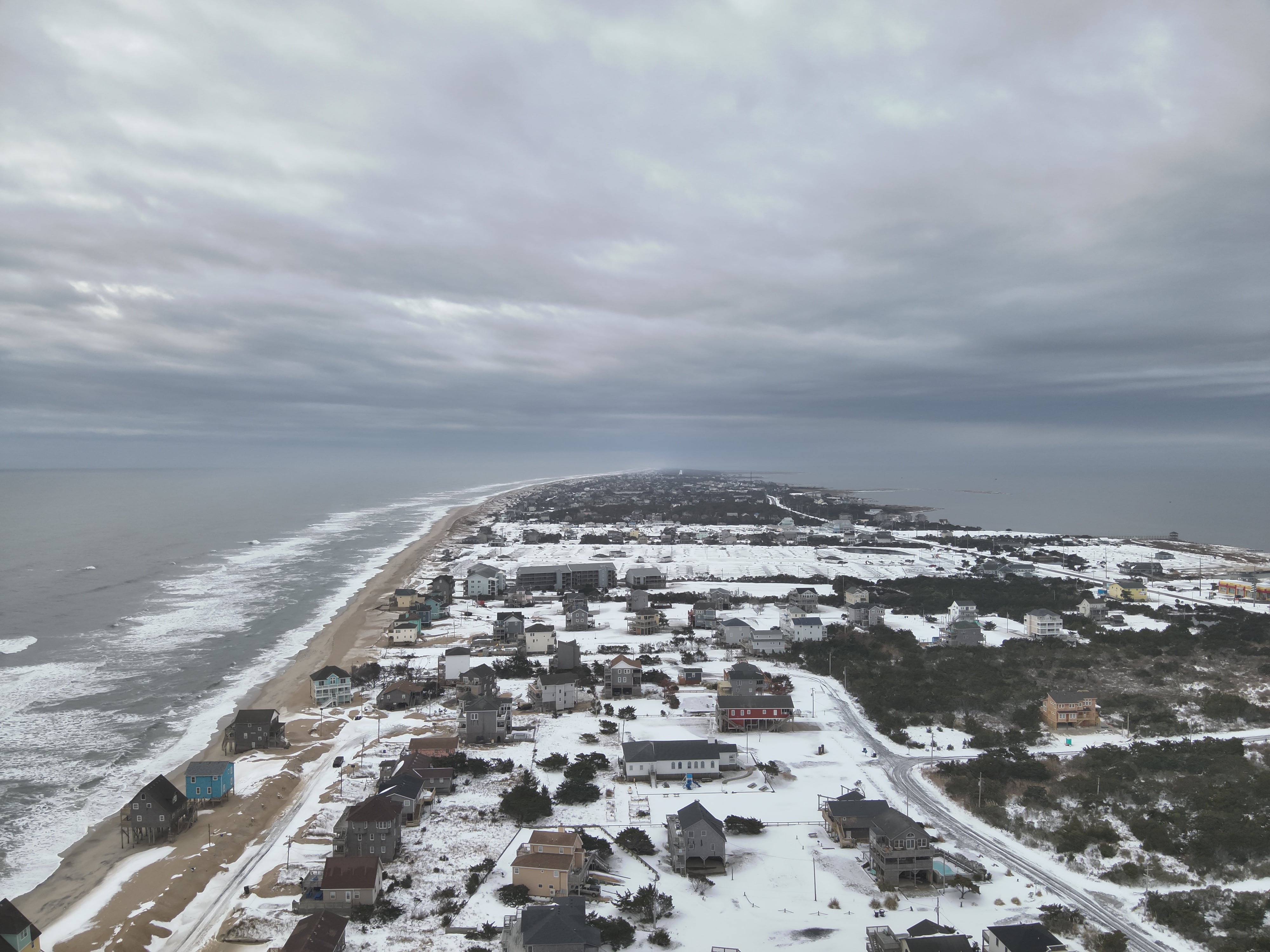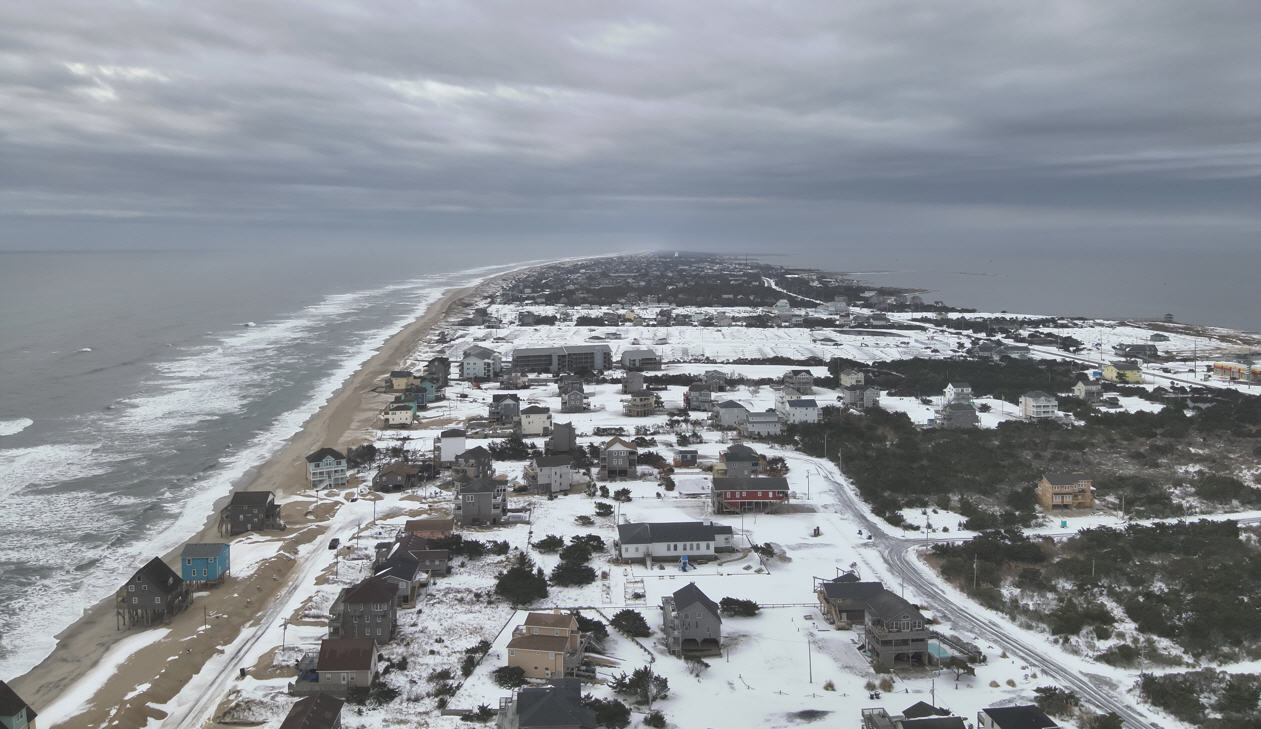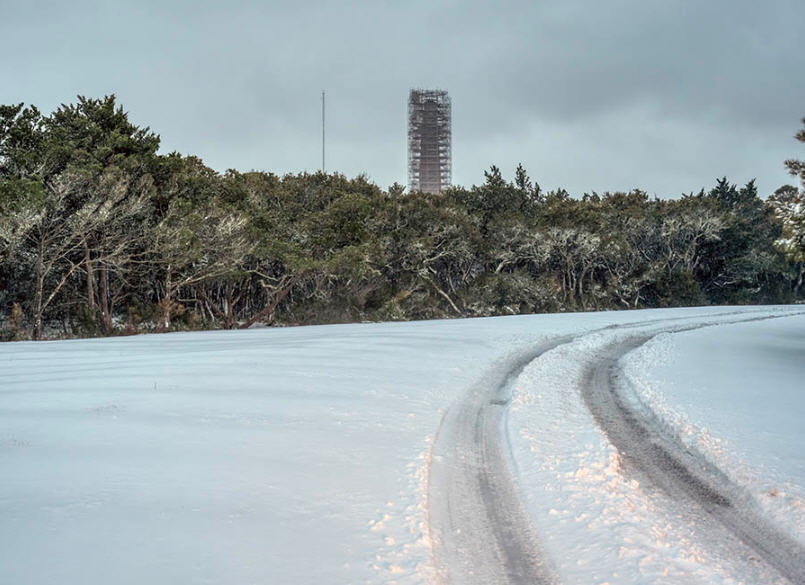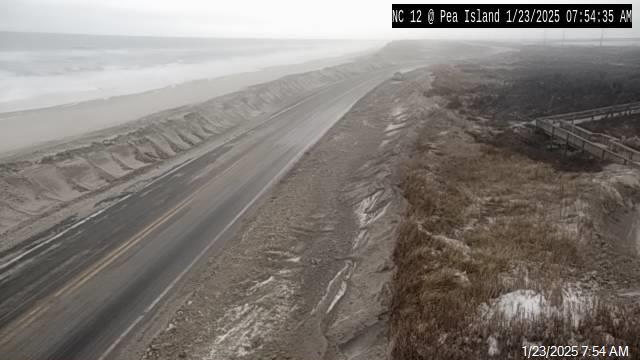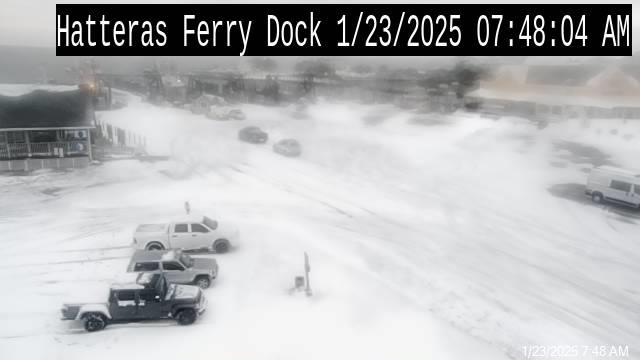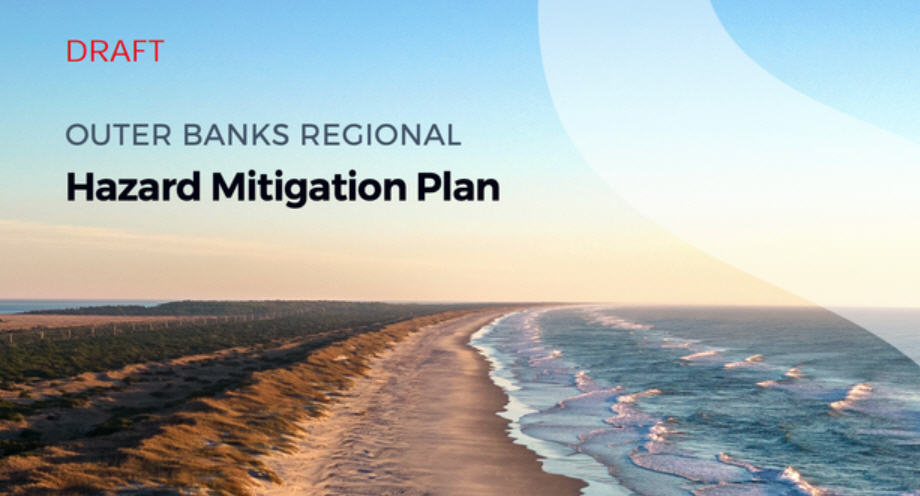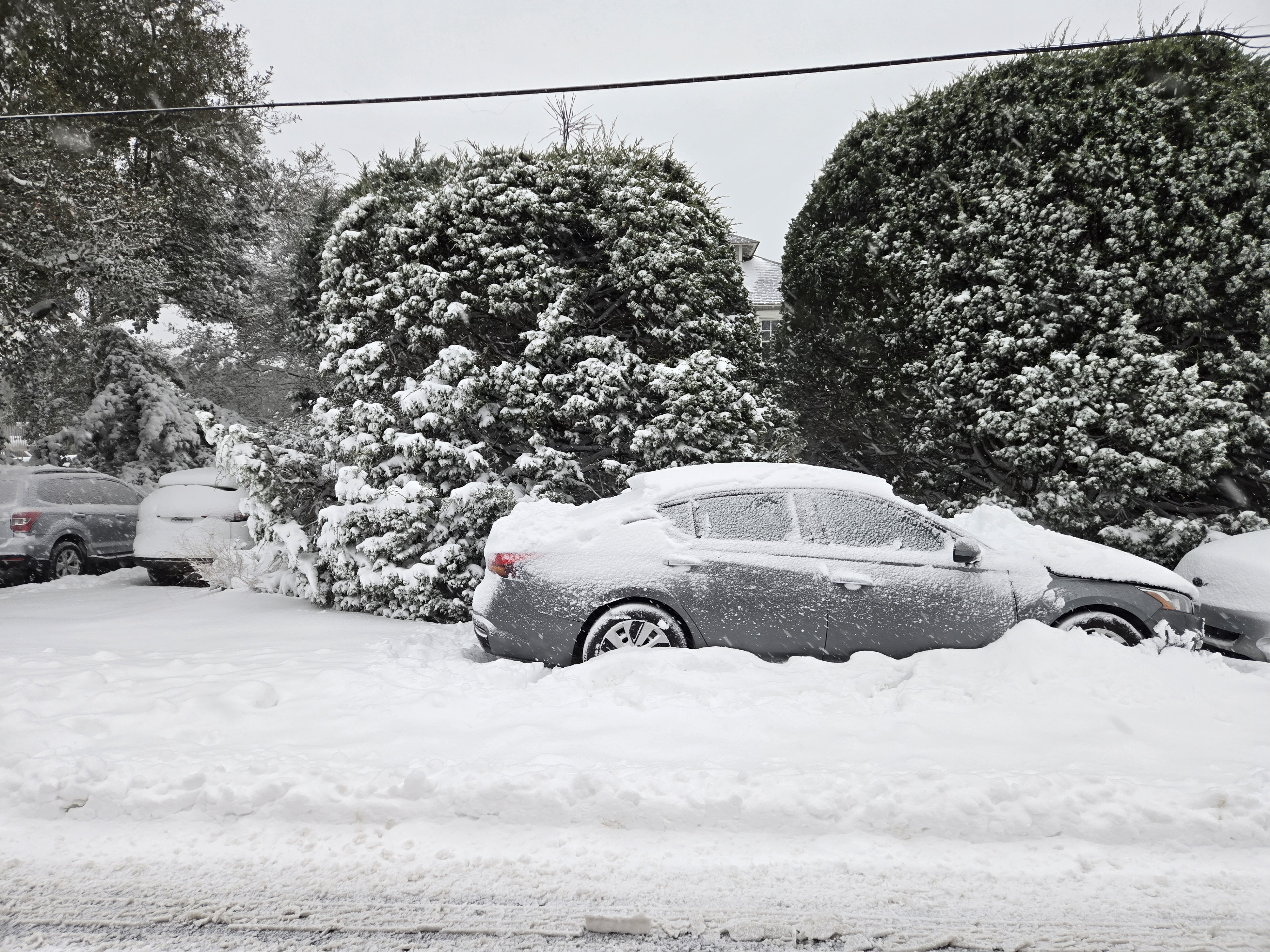NPS establishes pre-nesting areas for shorebird breeding season
NPS establishes pre-nesting areas for shorebird breeding season
The National Park Service has begun establishing its 2012 pre-nesting areas for shorebirds, as is required under the final off-road vehicle management plan and special regulation, which became effective on Feb. 15.
Pre-nesting areas for piping plovers, American oystercatchers, and Wilson’s plovers were installed by March 15. The areas for colonial waterbirds will be installed by April 15.
The areas are marked with symbolic fencing and on-site signage.
Seashore staff conducted its annual assessment of breeding habitat for nesting shorebirds between Jan. 30 and Feb. 7. The pre-nesting closure areas are based on the recent breeding history of the respective protected species at the seashore and the actual habitat conditions observed during the annual assessment.
At most pre-nesting areas pedestrian access is allowed along the shoreline below the ocean high-tide line until such time as shorebird breeding activity is observed, when standard species-specific buffers will be implemented.
Dogs are generally prohibited in the pedestrian shoreline access corridor below the high-tide line adjacent to the prenesting closures and within any posted resource closure, but properly leashed dogs are otherwise allowed in open ORV routes and pedestrian areas.
The site-specific restrictions are posted at each location and on-site signage, rather than the Google Earth map, is the most accurate and up-to-date indication of access status.
The 2012 breeding habitat assessment and pre-nesting maps are posted on the NPS park-planning website under the Document List for the ORV Management Plan/EIS and Rulemaking project at http://parkplanning.nps.gov/document.cfm?parkID=358&projectID=10641&documentID=46268
In addition, on March 15 the Bodie Island Spit seasonal ORV route from two-tenths mile south of Ramp 4 to the inlet was changed to a seasonal Vehicle Free Area in accordance with the designated ORV routes identified in the special regulation. The area is currently open to pedestrians and the seasonal ORV route will reopen to vehicle use on Sept. 15. The designated year-round ORV route from a half mile south of Coquina Beach to two-tenths of a mile south of Ramp 4 remains open to vehicles with access via Ramp 4.
As a reminder, March 15 marks the end of the transition period provided to allow park visitors time to obtain the ORV special use permit that is required to use the designated ORV routes. Now that the transition period has ended, NPS law enforcement ranges will actively enforce the permit requirement.
The National Park Service has begun establishing its 2012 pre-nesting areas for shorebirds, as is required under the final off-road vehicle management plan and special regulation, which became effective on Feb. 15.
Pre-nesting areas for piping plovers, American oystercatchers, and Wilson’s plovers were installed by March 15. The areas for colonial waterbirds will be installed by April 15.
The areas are marked with symbolic fencing and on-site signage.
Seashore staff conducted its annual assessment of breeding habitat for nesting shorebirds between Jan. 30 and Feb. 7. The pre-nesting closure areas are based on the recent breeding history of the respective protected species at the seashore and the actual habitat conditions observed during the annual assessment.
At most pre-nesting areas pedestrian access is allowed along the shoreline below the ocean high-tide line until such time as shorebird breeding activity is observed, when standard species-specific buffers will be implemented.
Dogs are generally prohibited in the pedestrian shoreline access corridor below the high-tide line adjacent to the prenesting closures and within any posted resource closure, but properly leashed dogs are otherwise allowed in open ORV routes and pedestrian areas.
The site-specific restrictions are posted at each location and on-site signage, rather than the Google Earth map, is the most accurate and up-to-date indication of access status.
The 2012 breeding habitat assessment and pre-nesting maps are posted on the NPS park-planning website under the Document List for the ORV Management Plan/EIS and Rulemaking project at http://parkplanning.nps.gov/document.cfm?parkID=358&projectID=10641&documentID=46268
In addition, on March 15 the Bodie Island Spit seasonal ORV route from two-tenths mile south of Ramp 4 to the inlet was changed to a seasonal Vehicle Free Area in accordance with the designated ORV routes identified in the special regulation. The area is currently open to pedestrians and the seasonal ORV route will reopen to vehicle use on Sept. 15. The designated year-round ORV route from a half mile south of Coquina Beach to two-tenths of a mile south of Ramp 4 remains open to vehicles with access via Ramp 4.
As a reminder, March 15 marks the end of the transition period provided to allow park visitors time to obtain the ORV special use permit that is required to use the designated ORV routes. Now that the transition period has ended, NPS law enforcement ranges will actively enforce the permit requirement.
The National Park Service has begun establishing its 2012 pre-nesting areas for shorebirds, as is required under the final off-road vehicle management plan and special regulation, which became effective on Feb. 15.
Pre-nesting areas for piping plovers, American oystercatchers, and Wilson’s plovers were installed by March 15. The areas for colonial waterbirds will be installed by April 15.
The areas are marked with symbolic fencing and on-site signage.
Seashore staff conducted its annual assessment of breeding habitat for nesting shorebirds between Jan. 30 and Feb. 7. The pre-nesting closure areas are based on the recent breeding history of the respective protected species at the seashore and the actual habitat conditions observed during the annual assessment.
At most pre-nesting areas pedestrian access is allowed along the shoreline below the ocean high-tide line until such time as shorebird breeding activity is observed, when standard species-specific buffers will be implemented.
Dogs are generally prohibited in the pedestrian shoreline access corridor below the high-tide line adjacent to the prenesting closures and within any posted resource closure, but properly leashed dogs are otherwise allowed in open ORV routes and pedestrian areas.
The site-specific restrictions are posted at each location and on-site signage, rather than the Google Earth map, is the most accurate and up-to-date indication of access status.
The 2012 breeding habitat assessment and pre-nesting maps are posted on the NPS park-planning website under the Document List for the ORV Management Plan/EIS and Rulemaking project at http://parkplanning.nps.gov/document.cfm?parkID=358&projectID=10641&documentID=46268
In addition, on March 15 the Bodie Island Spit seasonal ORV route from two-tenths mile south of Ramp 4 to the inlet was changed to a seasonal Vehicle Free Area in accordance with the designated ORV routes identified in the special regulation. The area is currently open to pedestrians and the seasonal ORV route will reopen to vehicle use on Sept. 15. The designated year-round ORV route from a half mile south of Coquina Beach to two-tenths of a mile south of Ramp 4 remains open to vehicles with access via Ramp 4.
As a reminder, March 15 marks the end of the transition period provided to allow park visitors time to obtain the ORV special use permit that is required to use the designated ORV routes. Now that the transition period has ended, NPS law enforcement ranges will actively enforce the permit requirement.
The National Park Service has begun establishing its 2012 pre-nesting areas for shorebirds, as is required under the final off-road vehicle management plan and special regulation, which became effective on Feb. 15.
Pre-nesting areas for piping plovers, American oystercatchers, and Wilson’s plovers were installed by March 15. The areas for colonial waterbirds will be installed by April 15.
The areas are marked with symbolic fencing and on-site signage.
Seashore staff conducted its annual assessment of breeding habitat for nesting shorebirds between Jan. 30 and Feb. 7. The pre-nesting closure areas are based on the recent breeding history of the respective protected species at the seashore and the actual habitat conditions observed during the annual assessment.
At most pre-nesting areas pedestrian access is allowed along the shoreline below the ocean high-tide line until such time as shorebird breeding activity is observed, when standard species-specific buffers will be implemented.
Dogs are generally prohibited in the pedestrian shoreline access corridor below the high-tide line adjacent to the prenesting closures and within any posted resource closure, but properly leashed dogs are otherwise allowed in open ORV routes and pedestrian areas.
The site-specific restrictions are posted at each location and on-site signage, rather than the Google Earth map, is the most accurate and up-to-date indication of access status.
The 2012 breeding habitat assessment and pre-nesting maps are posted on the NPS park-planning website under the Document List for the ORV Management Plan/EIS and Rulemaking project at http://parkplanning.nps.gov/document.cfm?parkID=358&projectID=10641&documentID=46268
In addition, on March 15 the Bodie Island Spit seasonal ORV route from two-tenths mile south of Ramp 4 to the inlet was changed to a seasonal Vehicle Free Area in accordance with the designated ORV routes identified in the special regulation. The area is currently open to pedestrians and the seasonal ORV route will reopen to vehicle use on Sept. 15. The designated year-round ORV route from a half mile south of Coquina Beach to two-tenths of a mile south of Ramp 4 remains open to vehicles with access via Ramp 4.
As a reminder, March 15 marks the end of the transition period provided to allow park visitors time to obtain the ORV special use permit that is required to use the designated ORV routes. Now that the transition period has ended, NPS law enforcement ranges will actively enforce the permit requirement.
ORV permits are available at the following locations: Coquina Beach, the Cape Hatteras Lighthouse Visitor Center (Buxton), and the Ocracoke Visitor Center. The permit offices are open from 8 a.m. to 4:30 p.m., year-round, seven days a week, except Christmas Day, with expanded hours on weekends and holidays during the summer season.
The cost of an annual permit (valid for the calendar year) is $120. A seven-day ORV permit (valid from the date issued) costs $50. Failure to obtain a permit is a petty offense under Title 36 of the Code of Federal Regulations. Persons cited for violating the permit requirement have the option of paying the $150 fine by mail or appearing in U.S. District Court.
The seashore’s interactive Google Earth map has been updated to reflect these changes. The map is available online at: http://www.nps.gov/caha/planyourvisit/googleearthmap.htm (Note: Pedestrian access areas, including the shoreline access adjacent to prenesting areas, are indicated by a blue line on the Google Earth map.)
ORV permits are available at the following locations: Coquina Beach, the Cape Hatteras Lighthouse Visitor Center (Buxton), and the Ocracoke Visitor Center. The permit offices are open from 8 a.m. to 4:30 p.m., year-round, seven days a week, except Christmas Day, with expanded hours on weekends and holidays during the summer season.
The cost of an annual permit (valid for the calendar year) is $120. A seven-day ORV permit (valid from the date issued) costs $50. Failure to obtain a permit is a petty offense under Title 36 of the Code of Federal Regulations. Persons cited for violating the permit requirement have the option of paying the $150 fine by mail or appearing in U.S. District Court.
The seashore’s interactive Google Earth map has been updated to reflect these changes. The map is available online at: http://www.nps.gov/caha/planyourvisit/googleearthmap.htm (Note: Pedestrian access areas, including the shoreline access adjacent to prenesting areas, are indicated by a blue line on the Google Earth map.)
ORV permits are available at the following locations: Coquina Beach, the Cape Hatteras Lighthouse Visitor Center (Buxton), and the Ocracoke Visitor Center. The permit offices are open from 8 a.m. to 4:30 p.m., year-round, seven days a week, except Christmas Day, with expanded hours on weekends and holidays during the summer season.
The cost of an annual permit (valid for the calendar year) is $120. A seven-day ORV permit (valid from the date issued) costs $50. Failure to obtain a permit is a petty offense under Title 36 of the Code of Federal Regulations. Persons cited for violating the permit requirement have the option of paying the $150 fine by mail or appearing in U.S. District Court.
The seashore’s interactive Google Earth map has been updated to reflect these changes. The map is available online at: http://www.nps.gov/caha/planyourvisit/googleearthmap.htm (Note: Pedestrian access areas, including the shoreline access adjacent to prenesting areas, are indicated by a blue line on the Google Earth map.)
ORV permits are available at the following locations: Coquina Beach, the Cape Hatteras Lighthouse Visitor Center (Buxton), and the Ocracoke Visitor Center. The permit offices are open from 8 a.m. to 4:30 p.m., year-round, seven days a week, except Christmas Day, with expanded hours on weekends and holidays during the summer season.
The cost of an annual permit (valid for the calendar year) is $120. A seven-day ORV permit (valid from the date issued) costs $50. Failure to obtain a permit is a petty offense under Title 36 of the Code of Federal Regulations. Persons cited for violating the permit requirement have the option of paying the $150 fine by mail or appearing in U.S. District Court.
The seashore’s interactive Google Earth map has been updated to reflect these changes. The map is available online at: http://www.nps.gov/caha/planyourvisit/googleearthmap.htm (Note: Pedestrian access areas, including the shoreline access adjacent to prenesting areas, are indicated by a blue line on the Google Earth map.)
Subject
Name
(required, will not be published)
(required, will not be published)
City :
State :
Your Comments:
May be posted on the Letters to the Editor page at the discretion of the editor.
May be posted on the Letters to the Editor page at the discretion of the editor.
May be posted on the Letters to the Editor page at the discretion of the editor.
May be posted on the Letters to the Editor page at the discretion of the editor.




